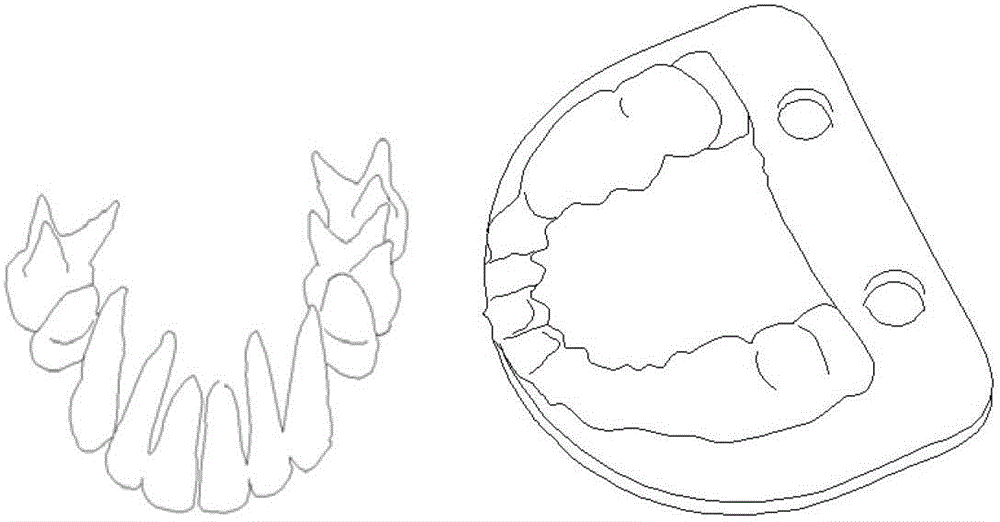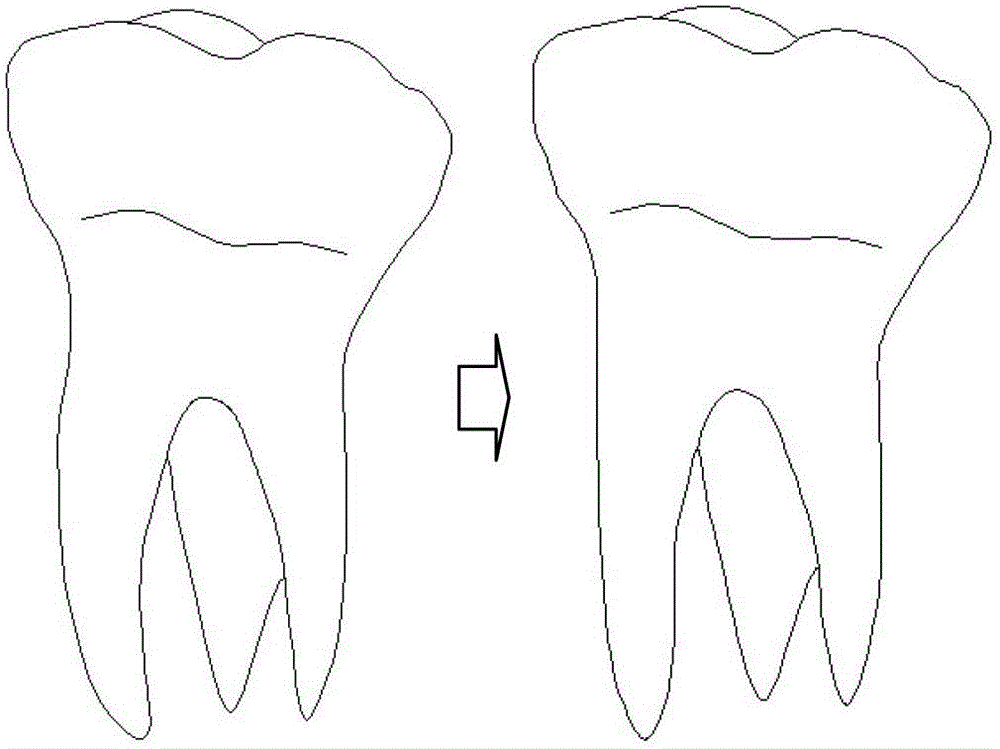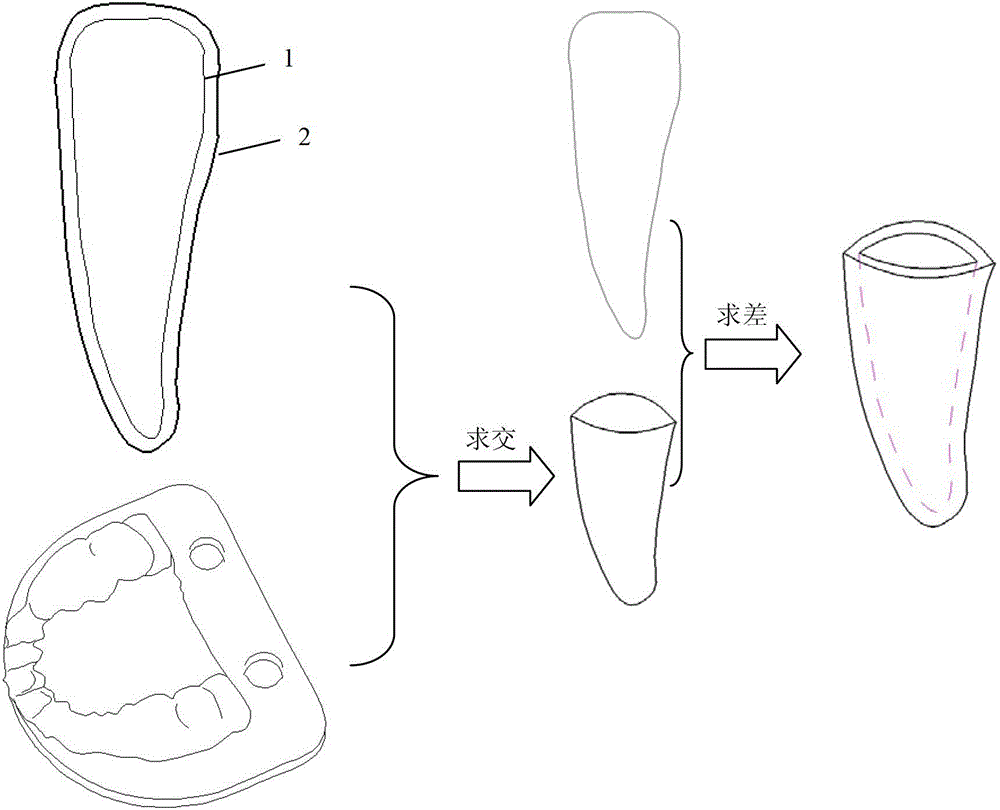Modeling method of oral cavity model used for individual three-dimensional orthodontic force test
A modeling method and oral model technology, applied in medical science, dentistry, etc., can solve problems such as poor reliability, inability to effectively guide orthodontic programs, and inability to accurately obtain orthodontic force and torque from oral models, and achieve good reliability
- Summary
- Abstract
- Description
- Claims
- Application Information
AI Technical Summary
Problems solved by technology
Method used
Image
Examples
Embodiment Construction
[0029] The present invention will be further described below in conjunction with the accompanying drawings.
[0030] refer to Figure 1 to Figure 7 , a method for modeling an oral cavity model for personalized three-dimensional orthodontic force detection, comprising the following steps:
[0031] 1) CT data acquisition: take CT images of the patient's oral cavity.
[0032] 2) Reconstruction of 3D model of oral tissue: use 3D reconstruction software to reconstruct the patient's oral cavity model, the reconstruction model includes teeth and alveolar bone without root socket, such as figure 1 shown.
[0033] 3) For the molars with multiple roots, correct the curved roots, that is, consider the direction of drawing, straighten the curved roots, and make them smaller or the same as they go toward the root, such as figure 2 shown.
[0034] 4) Design the periodontal ligament: expand the thickness of the periodontal ligament outward from the root surface, such as 0.25 mm, to obta...
PUM
 Login to View More
Login to View More Abstract
Description
Claims
Application Information
 Login to View More
Login to View More - R&D
- Intellectual Property
- Life Sciences
- Materials
- Tech Scout
- Unparalleled Data Quality
- Higher Quality Content
- 60% Fewer Hallucinations
Browse by: Latest US Patents, China's latest patents, Technical Efficacy Thesaurus, Application Domain, Technology Topic, Popular Technical Reports.
© 2025 PatSnap. All rights reserved.Legal|Privacy policy|Modern Slavery Act Transparency Statement|Sitemap|About US| Contact US: help@patsnap.com



